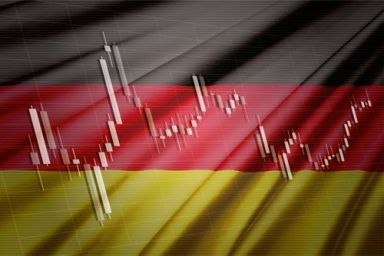Featured articles

Why Michael Burry just sold all his tech stocks
Michael Burry has just exited a nearly $100 million position on Nvidia that he opened earlier this year.
14:42, 9 October 2025

Gold forecast: Third-party price targets
Gold (XAU/USD) is currently trading at $3,982.94 (as of 6:12pm UTC, 7 October 2025), after briefly crossing $4,000 per ounce for the first time during the session.
14:43, 9 October 2025

How does Elon Musk impact cryptocurrency prices?
In cryptocurrency markets, few individuals command as much attention as Elon Musk. The CEO of Tesla and SpaceX’s tweets, Tesla and Dogecoin announcements, and public statements can trigger periods of heightened volatility, with shifts in buying and selling pressure across digital assets.
13:29, 30 September 2025

Microsoft stock split: history, context and outlook
Microsoft’s share history includes several stock splits designed to make its stock more accessible to investors. Although the last split took place more than two decades ago, the subject continues to attract interest among traders and market observers.
4 hours ago

CIBC stock split: will Canadian Imperial Bank of Commerce shares split again?
The Canadian Imperial Bank of Commerce (CIBC) has a long history of adjusting its share structure, including several stock splits designed to improve liquidity and broaden accessibility. While no new split has been announced as of November 2025, recent activity related to its Canadian Depositary Receipts (CDRs) has attracted renewed interest from market participants.
7 hours ago

Polestar shareholders 2025: who owns the most PSNY stock?
Polestar Automotive Holding UK Plc (PSNY) has experienced several developments since its Nasdaq debut in 2022, influenced by shifting market conditions and investor sentiment.
7 hours ago

Manchester United shareholders: Who owns the most MANU stock?
Manchester United (MANU), one of the most widely recognised names in world football, continues to evolve both on and off the pitch. Over the past year, the club has undergone significant operational restructuring under INEOS, alongside progress in its long-term stadium and regeneration plans.
7 hours ago

How overseas investors can access the NSE Nifty 50 (India 50) Index
Learn how to access the NSE Nifty 50 Index (India 50) as an overseas investor – via ETFs, mutual funds, CFDs and derivatives.
8 hours ago

Top ETFs and trading insights
ETFs have become an established way to access a broad mix of markets within a single trade. They combine the flexibility of shares with the diversification of funds, making them a commonly used instrument among both retail and institutional traders.
10 hours ago

S&P 500 & NASDAQ Face Re-Rating Risk Amid Liquidity and AI Concerns
Since mid-October, the S&P has fallen around 4%, while the Nasdaq has declined about 5%. There are many reasons for this, and various paths that have led us here over the past month.
15:17, 18 November 2025

DAX 40 outlook: selloff continues as long-term support is broken
The German DAX 40 is facing renewed downside pressure as investors grow increasingly worried about the outlook of the global economy
11:20, 18 November 2025

Platinum vs palladium: which metal to choose?
We examine the platinum and palladium markets and the latest trends in supply, demand and pricing for both metals in 2025.
07:32, 14 November 2025

Market Mondays: Shutdown relief drives sentiment higher
Market sentiment improves, lifting equities and weighing on the dollar, as a deal aimed at ending the US government shutdown has passed the Senate
10:50, 10 November 2025

Gold steadies as safe-haven demand increases
Gold sees renewed safe haven interest as investors become more risk-averse, but several hurdles remain ahead
11:23, 5 November 2025

Gold Mining Stocks: Top Producers, Performance and Industry Outlook
Gold mining stocks provide a way to gain exposure to the precious metals market. For CFD traders, identifying which companies offer strong potential can have a notable impact on performance.
07:57, 5 November 2025

Best currency pairs to trade at night
What are the pros and cons of night trading, and how can you choose the right currency pair for your trading strategy?
14:31, 18 November 2025

Market Mondays: Shutdown relief drives sentiment higher
Market sentiment improves, lifting equities and weighing on the dollar, as a deal aimed at ending the US government shutdown has passed the Senate
10:50, 10 November 2025

Market Mondays: Balancing cuts, earnings, and a stronger dollar
Markets digest the impact of last week's volatility after a hawkish cut from the FOMC and tech earnings that didn't quite meet the mark
11:14, 3 November 2025

ECB Preview: no action expected as economy settles
The European Central Bank is expected to leave rates unchanged at their meeting this week as the balance of risks remains in favour of moderate growth and inflation
10:59, 29 October 2025

Who owns JasmyCoin (JASMY) in 2025?
JasmyCoin (JASMY) is a cryptocurrency token built on the Ethereum blockchain, developed by Japan’s Internet of Things (IoT) company, Jasmy Inc.
3 hours ago

How many litecoins are there in 2025?
As one of the earliest cryptocurrencies, Litecoin remains notable for its transparent supply model and long-standing presence in the market.
4 hours ago

Who owns the most Dogecoin in 2025? Biggest whales revealed
Originally created as a parody of the crypto market, Dogecoin has since developed a loyal community and a lasting presence in digital finance.
8 hours ago

Who owns the most Terra Classic coin (LUNC) in 2025?
Terra Classic (LUNC) remains one of the most discussed legacy projects in decentralised finance. Following the 2022 collapse of the original Terra ecosystem, the community has continued to maintain the network under a new governance model.
10 hours ago
